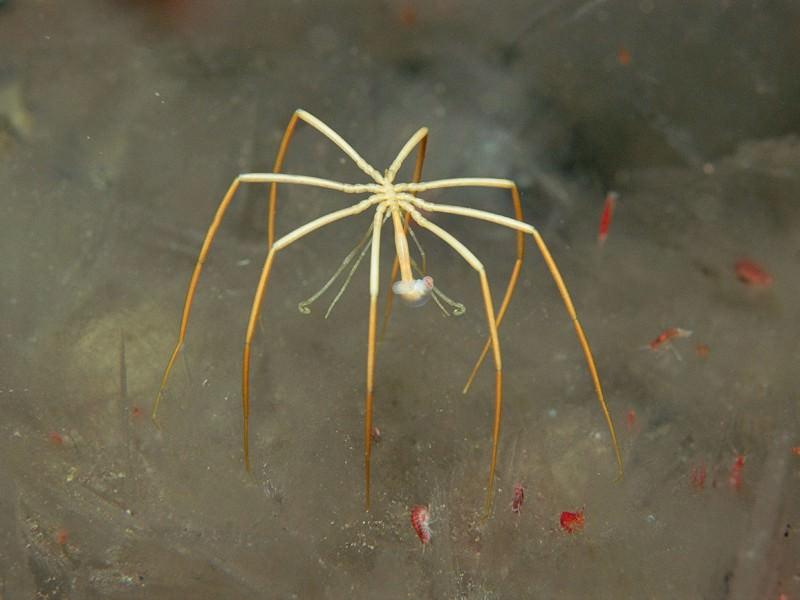Breathe Deep: How the Antarctic Sea Spider Gets Oxygen



Very cool video in the Original Article
Antarctic sea spiders have no lungs or gills, so how do they get oxygen into their bodies?
The answer is in their pores.
There is nothing like a sea spider. Really.
Ask Amy L. Moran, who dives under the Antarctic ice to collect and study the giant species that live in those cold waters. “Everything that they do is weird,” she said.
The males carry the young, for example. The spiders’ gonads are in their legs — and so are their guts.
The latest weird thing scientists have found out about sea spiders is how they solve the problem of getting oxygen from seawater without lungs or gills. Turns out, they have pores.
Antarctic sea spiders grow to dinner-plate size. Elsewhere they’re mostly small, many less than a half-inch in diameter.
They do have a heart, according to Dr. Moran, a biologist at the University of Hawaii. “But it’s a very wimpy heart.”
So the gut, as it churns, moves blood — actually, something called hemolymph — around the body. The hemolymph, like blood in mammals, carries oxygen.
What Dr. Moran and Steven J. Lane, of the University of Montana, and their colleagues have been investigating recently was how the sea spiders get that oxygen into their bodies in the first place.
The creatures don’t have lungs or gills, so the only other explanation seemed to be that the spiders were absorbing oxygen through their skin. But their skin is tough, a rigid exoskeleton that allows them to move around, and oxygen absorption through that would be unlikely.
So the researchers concentrated on numerous pores that dot the legs of sea spiders. It turns out they are deep enough to bring seawater through the exoskeleton, where the oxygen can be absorbed.
And given the weight of the sea spiders and their metabolism, the pores seem to be numerous enough to do the trick. The scientists reported their work in the Journal of Experimental Biology.
No news to the sea spiders, but good to know for the future. If sea temperature warms at the poles as a result of climate change, the water might become less rich with oxygen, which could perhaps pose a challenge to the sea spiders.


Just for the cool...
Yeah they are...
I got to see some of these when I was at McMurdo Station, Antarctica. The Science Center there had some in a large tank. They are some of the freakiest looking critters. Just imagine a giant sized terrestrial daddy long leg spider and you have a good idea.
Interesting, so glad they live in the Antarctica...far, far away from any sea water I'd frequent!
Beyond their freakish look, quite amazed at this critter's features and body systems.
They also have in Antarctica a species of cod known as Antarctic cod. They are unique in the fish animal world in that they actually have a form glycol (anti-freeze) in their blood that allows them to survive in the freezing water down there. They can get as big as 5 to 6 feet in length. At Thanksgiving and Christmas our dining facility a few these for holiday meals. Pretty good tasting when prepared properly. Strayed a bit off topic there, sorry.
Cool animals are not off-topic when the topic is a cool animal.